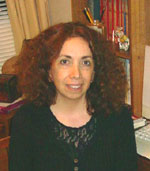Ana Maria Cardenas Diaz, Ph.D.

- Title
- Full Professor
- Department
- Center for Neuroscience
- Institution
- University of Valparaiso
- Address
- Gran Bretaña 1111
- City
- Valparaiso
- Country
- Chile
- [email protected]
- Website
- www.cinv.uv.cl

- Research field
- Neuroscience; Cell Biology
- Award year
- 1992
- Country of origin
- Chile
- Mentor name
- Harvey B. Pollard, Ph.D
Research
The exocytosis is a key mechanism, crucial for physiological functions such as neurotransmission and hormone secretion. Upon physiological stimuli that increase cytosolic calcium, secretory vesicles storing transmitter molecules dock and fuse with the plasma membrane. During the fusion process, a narrow channel, called “fusion pore” connects the vesicular and extracellular compartments, allowing the slow trickling out of small molecules stored in the vesicle lumen. Later, the fusion pore expands to massively release the total vesicular content, or alternatively it may close, leading to the partial release of transmitters. These two modes of exocytosis are known as “full fusion” and “kiss-and-run” respectively. Why do endocrine cells require different modes of exodocytosis? Secretory vesicles of endocrine cells contain a cocktail of molecules of different sizes and physiological functions. Thus the existence of these two modes of exocytosis allows the cells to adjust the release of the active vesicular components to different physiological situations. At the present, we are studying the molecular mechanisms that control the behavior of the fusion pore, and define the mode of exocytosis.
Fellow Keywords
1992 Search Pew Fellows
- Ismael D. Bianco, Ph.D.
- Daniel J. Calvo, Ph.D.
- Ana Maria Cardenas Diaz, Ph.D.
- Miriam Echevarria Irusta, Ph.D
- Sergio T. Ferreira, Ph.D.
- Beatriz S. González-Flecha, Ph.D.
- Gabriel Gutierrez Ospina, M.D., Ph.D.
- Patricia Leon Mejia, Ph.D.
- Roberto Montes de Oca Luna, Ph.D.
- Claudia Tomes, Ph.D.
- Ivo Pontes Torres Filho, M.D., Ph.D.
- Mario E. Zurita, Ph.D.